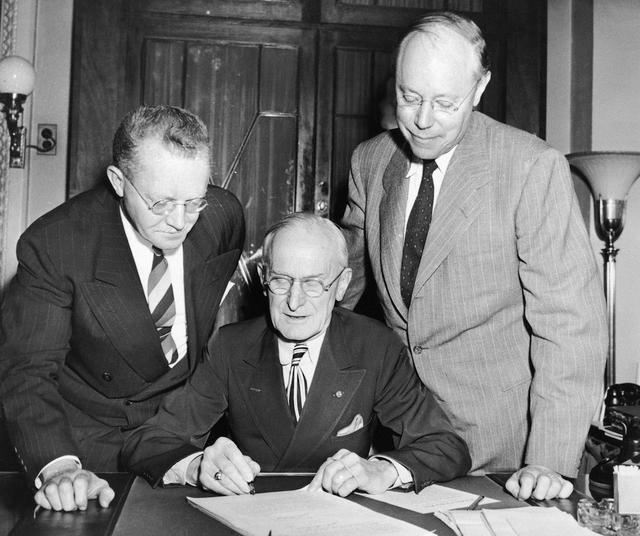
The 1947 Taft-Hartley Act was called the Slave Labor Act by Mineworkers leader John L. Lewis
Sanders and Warren Take Aim at Taft-Hartley // The American Prospect
by Rich Yeselson
Today, if Americans know anything at all about Taft-Hartley, they are familiar with the law’s section 14(b), which permits states to adopt “right to work” laws that prevent unions from negotiating contracts mandating that every worker the union represents must pay the union for the costs of that representation. Taft-Hartley thus permitted states to make union security provisions illegal. Immediately after the law was passed, most Southern states became right-to-work havens. Currently, 27 states are right-to-work, although last year, labor beat back at the polls an effort to turn increasingly conservative Missouri right-to-work.
Section 14(b) makes it harder for unions to organize workers, depletes union treasuries, and divides workers who pay union dues from the “free riders” who don’t, yet benefit from a union contract. While there are competing studies about its efficacy, it has undoubtedly limited the scope of union expansion, especially in the generally anti-union South. It is a signature anti-union articulation of plutocrats, corporations, and their political allies, who fought to impose it on the state level even before Taft-Hartley became law.
So it’s good but unsurprising news that, whatever their differences, the two candidates on the left wing of the Democratic Party wish to abolish it.
This year, Senators Bernie Sanders and Elizabeth Warren are running for president on the most pro-union and pro-worker platforms the nation has seen in decades. Their similar plans for sectoral bargaining and requiring corporations to permit their employees to elect members of their corporation’s board of directorshave drawn the attention of the commentariat. But as has largely not been noticed, their plans would also shift the legal landscape that frames the balance of power between workers and employers back toward what it was in the last decade of major private-sector union growth—1937 to 1947—by repealing key provisions of the 1947 law that has played a major role in the steady decline of workers’ rights and the stagnation of their incomes.
Sectoral bargaining and including workers on corporate boards are ideas that are new to the American economic landscape, though they’ve long been features of Germany’s more social market. They would strengthen the power of employees—but would not, in themselves, strengthen American unions. In fact, unions must grow enormously in numbers and influence in order to win the political struggle with corporate and reactionary America that will ensue over these proposals. Unions, workers, and their political supporters like Sanders and Warren are going to have to be much more militant and aggressive in order just to get to the point where sectoral bargaining and corporate representation can overcome the opposition of the most intensely anti-union corporate/political class in the advanced world. Class accords derive from class conflict.
But these two pols mostly have the right idea. In matters of union growth and workers’ rights, the Sanders and Warren labor plans are almost—but not quite—the same. Sanders has a proposal to outlaw firing “at will”—a centuries-old class imposition of Anglo-American law—and only permit firing for “just cause,” which would be like providing a union contract to everybody in the county. Sanders also says his goal would be the doubling of union membership in his first term of office.
Can union membership double in four years? In fact, it has happened three times before in our history, each time during a tremendous surge of working-class militancy: during the mid-1880s, which saw the rise of the Knights of Labor and the eight-hour-day movement; during the radical moment immediately following the end of the First World War; and during the middle-to-late 1930s, which witnessed the rise of the CIO’s industrial unionism and the efforts of the AFL to compete with its new rival. Heartening as Sanders’s support for growing unions may be, it will take a kindred burst of militancy to double labor’s size and scope.

No comments:
Post a Comment